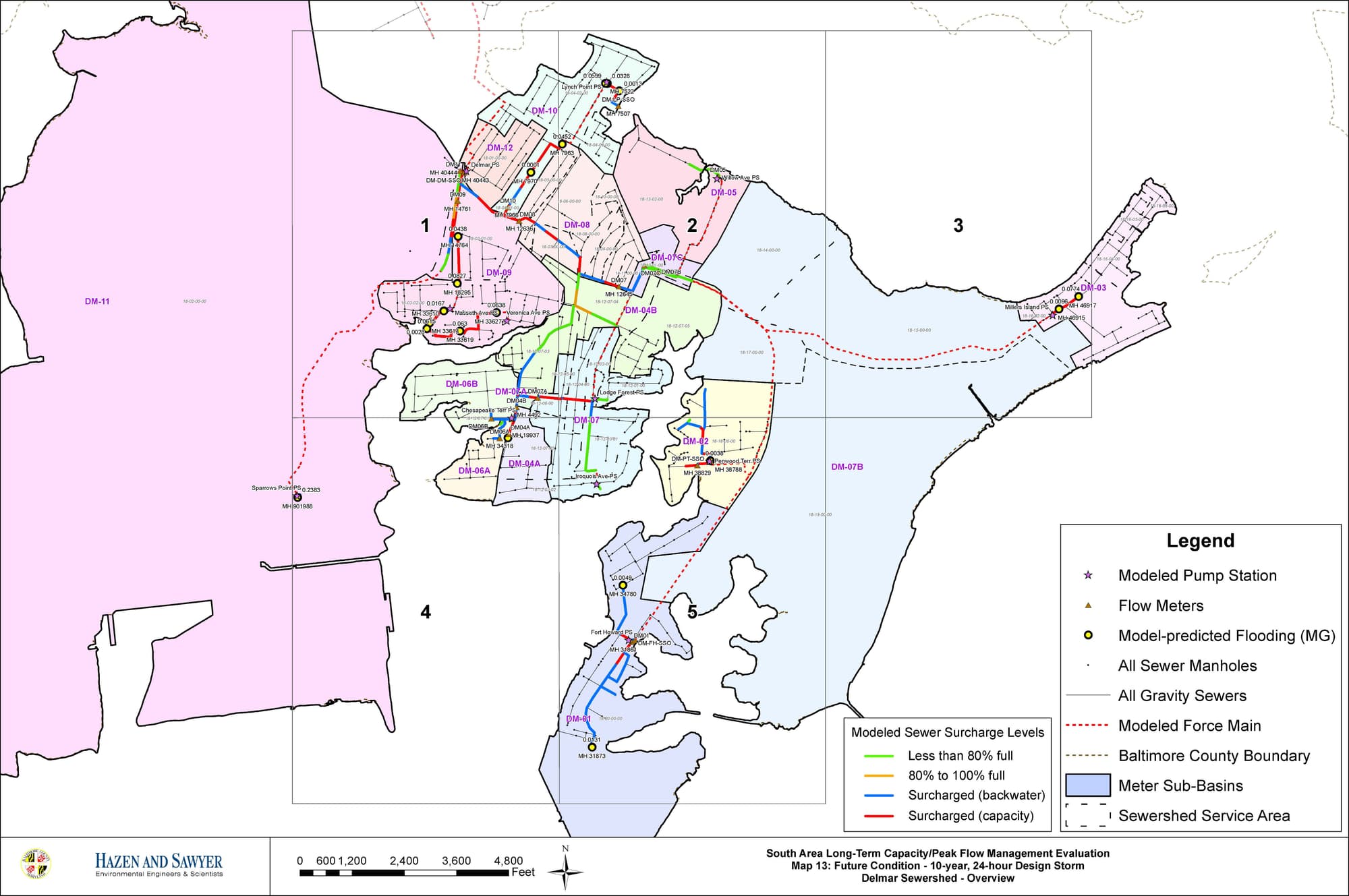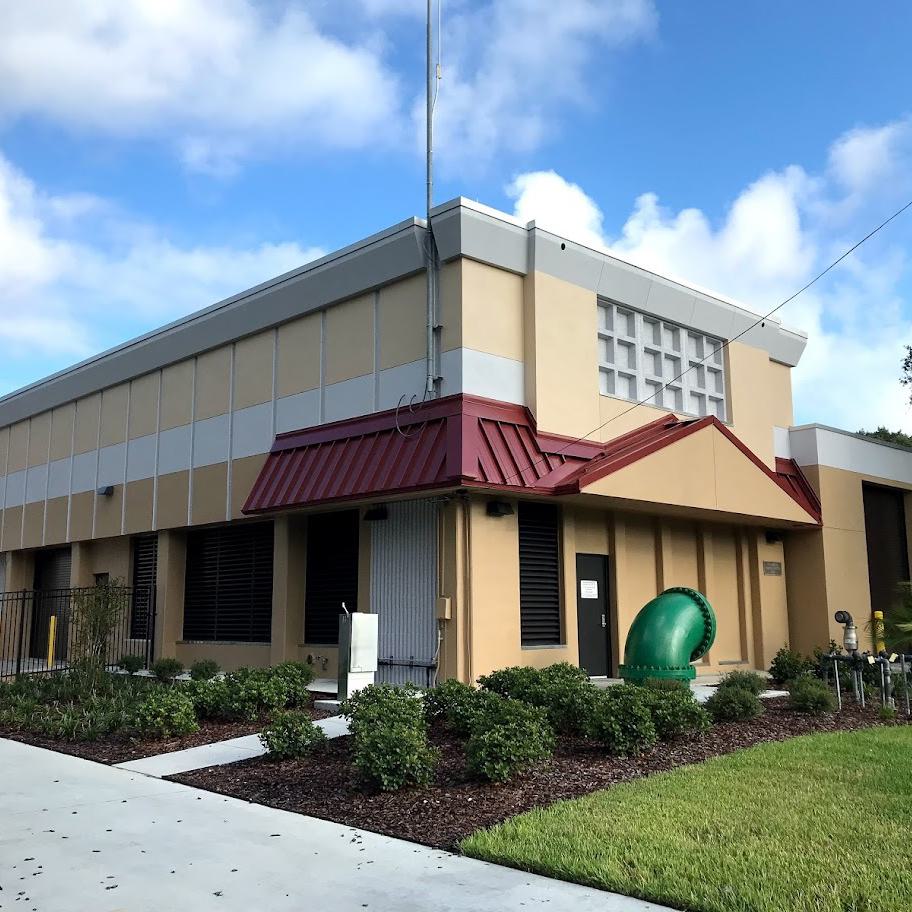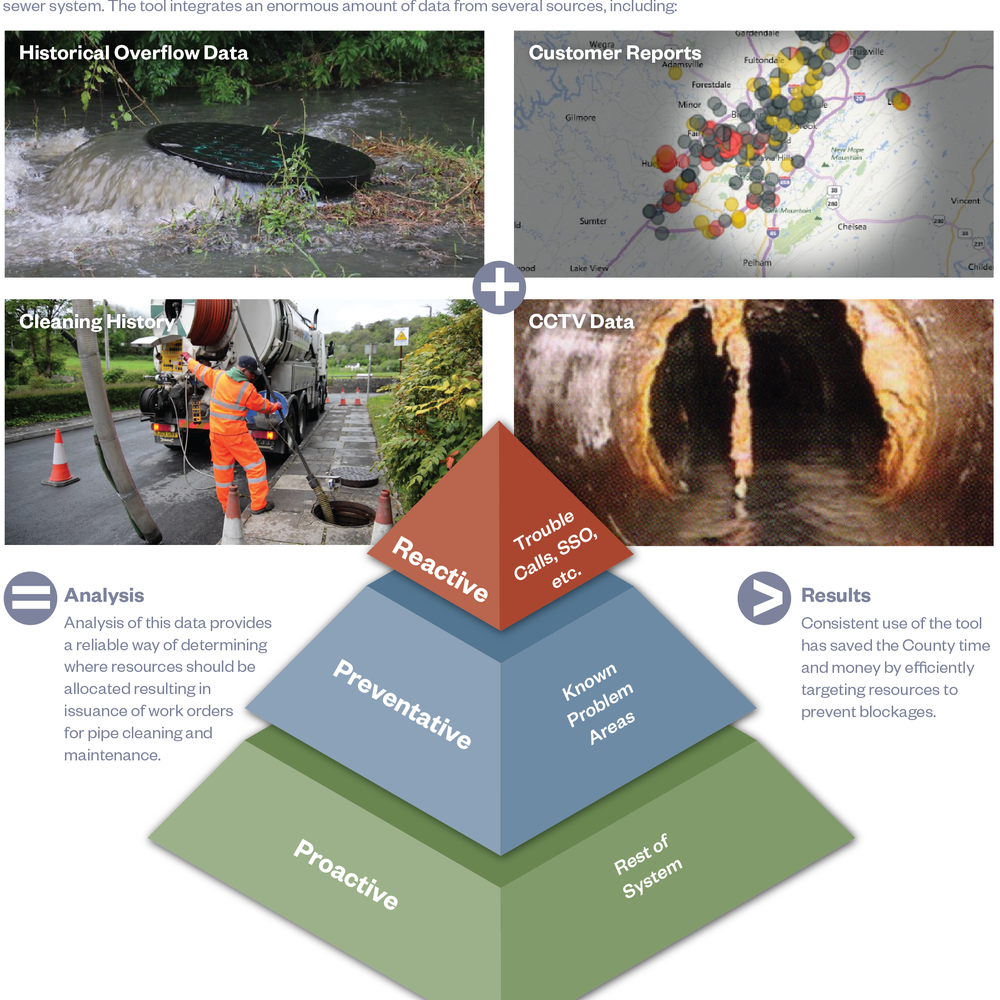Modeling Storms and Population Growth to Prevent Sewer Overflows
Hazen identified situations that could overwhelm Baltimore County’s sewer system in coming years – and cost-effective improvements to keep that from happening.
At a Glance
- Hazen engineers modeled a large, complex portion of Baltimore County’s sewer system that encompassed 65 pump stations and 300 miles of sewer pipes.
- Using the models, the team analyzed how five storms of varying intensity could impact the system for both existing and projected future customers. They also analyzed the efficacy of potential improvements to prevent sanitary sewer overflows (SSOs).
- The final report offered the County a cost-effective improvement strategy the County could easily implement, while staying within the project’s $1.4 million budget.

Charles (Chuck) Wilson has expertise in modeling large-scale stormwater and wastewater systems, planning CSO facilities, and designing CSO collection and stormwater drainage systems.
Related Topics:

A map showing part of the sewer system of Baltimore County, which wraps around the City of Baltimore. Hazen was tapped to model a complicated portion of the southeastern side of the system, much of which borders the Chesapeake Bay.
Baltimore County’s sewer system often overflowed when it rained. Eventually, the County—which wraps around Baltimore City—faced a consent decree ordering it to make the spills stop. The County tapped Hazen and Sawyer to help it plan improvements for a large portion of the sewer system encompassing eight sewersheds, 65 pump stations and 1.6 million linear feet of pipes.
The Hazen team had three objectives: Create a dynamic computer model of that part of the system. Use the model to pinpoint what scenarios could trigger SSOs over roughly the next decade, and what system improvements could prevent them. And finally, figure out what the solutions would cost before recommending the best, most cost-effective strategy.
To handle the sewer system’s complicated geography, the engineers built five distinct InfoWorks models. The team confirmed their accuracy using a wide array of complex data, including data from hundreds of manhole inspections (as pictured below) and a large number of flow monitors.
The engineers first looked at what could cause SSOs: They ran the model through a wide range of precipitation scenarios that could happen over the next decade – from 2-year, 6-hour to 20-year, 24-hour storms – along with population growth scenarios that would add more users to the system.
Then they tested how the model responded to various improvements that could avert SSOs, including repairs and rehabilitation to reduce infiltration and inflow (extraneous water that gets into the system); additional piping; upgraded pump stations; system optimization; and equalization tanks for storage. For each sewershed, they figured out which of those strategies were most effective and affordable and prioritized them in the final recommendations.
The final product was a set of clear, cost-effective recommendations for how the County could prevent SSOs going forward. The County used Hazen's recommendations to create its own list of priority changes to the system. It's currently implementing those changes and plans to monitor the system's performance and make additional adaptations and changes if needed.

A model showing how a 10-year, 24-hour storm could impact part of Baltimore County's sewer system. The yellow dots pinpoint spots where SSOs could happen.




















